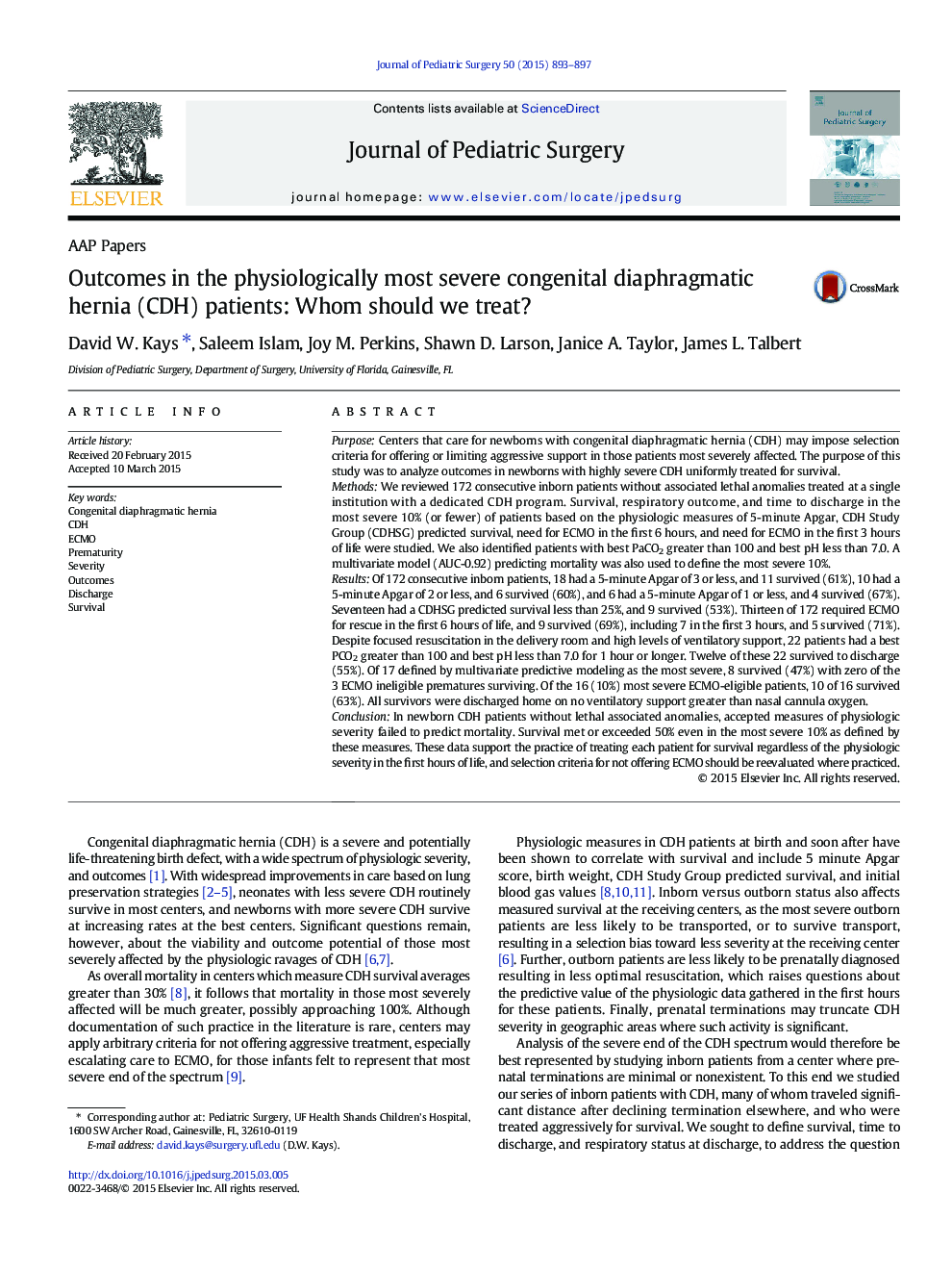| کد مقاله | کد نشریه | سال انتشار | مقاله انگلیسی | نسخه تمام متن |
|---|---|---|---|---|
| 4155031 | 1273735 | 2015 | 5 صفحه PDF | دانلود رایگان |
PurposeCenters that care for newborns with congenital diaphragmatic hernia (CDH) may impose selection criteria for offering or limiting aggressive support in those patients most severely affected. The purpose of this study was to analyze outcomes in newborns with highly severe CDH uniformly treated for survival.MethodsWe reviewed 172 consecutive inborn patients without associated lethal anomalies treated at a single institution with a dedicated CDH program. Survival, respiratory outcome, and time to discharge in the most severe 10% (or fewer) of patients based on the physiologic measures of 5-minute Apgar, CDH Study Group (CDHSG) predicted survival, need for ECMO in the first 6 hours, and need for ECMO in the first 3 hours of life were studied. We also identified patients with best PaCO2 greater than 100 and best pH less than 7.0. A multivariate model (AUC-0.92) predicting mortality was also used to define the most severe 10%.ResultsOf 172 consecutive inborn patients, 18 had a 5-minute Apgar of 3 or less, and 11 survived (61%), 10 had a 5-minute Apgar of 2 or less, and 6 survived (60%), and 6 had a 5-minute Apgar of 1 or less, and 4 survived (67%). Seventeen had a CDHSG predicted survival less than 25%, and 9 survived (53%). Thirteen of 172 required ECMO for rescue in the first 6 hours of life, and 9 survived (69%), including 7 in the first 3 hours, and 5 survived (71%). Despite focused resuscitation in the delivery room and high levels of ventilatory support, 22 patients had a best PCO2 greater than 100 and best pH less than 7.0 for 1 hour or longer. Twelve of these 22 survived to discharge (55%). Of 17 defined by multivariate predictive modeling as the most severe, 8 survived (47%) with zero of the 3 ECMO ineligible prematures surviving. Of the 16 (10%) most severe ECMO-eligible patients, 10 of 16 survived (63%). All survivors were discharged home on no ventilatory support greater than nasal cannula oxygen.ConclusionIn newborn CDH patients without lethal associated anomalies, accepted measures of physiologic severity failed to predict mortality. Survival met or exceeded 50% even in the most severe 10% as defined by these measures. These data support the practice of treating each patient for survival regardless of the physiologic severity in the first hours of life, and selection criteria for not offering ECMO should be reevaluated where practiced.
Journal: Journal of Pediatric Surgery - Volume 50, Issue 6, June 2015, Pages 893–897
